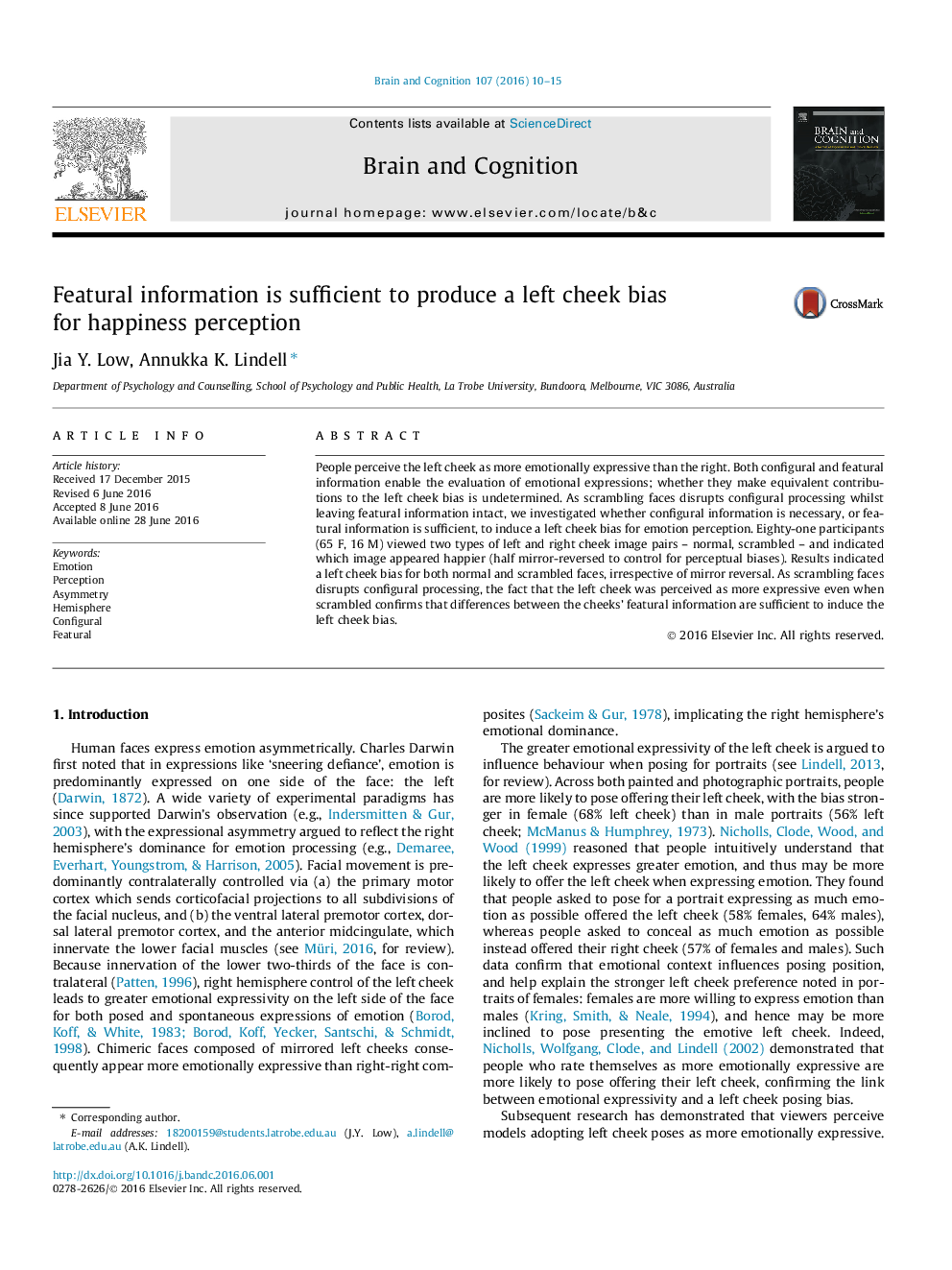| Article ID | Journal | Published Year | Pages | File Type |
|---|---|---|---|---|
| 924037 | Brain and Cognition | 2016 | 6 Pages |
•The left cheek, controlled by the right hemisphere, expresses stronger emotion.•Left cheek portraits consequently appear happier than right cheek portraits.•We examined whether configural or featural cues drive the left cheek bias.•People showed a left cheek bias for both normal and scrambled face stimuli.•Featural cues are sufficient to induce a left cheek bias for happiness perception.
People perceive the left cheek as more emotionally expressive than the right. Both configural and featural information enable the evaluation of emotional expressions; whether they make equivalent contributions to the left cheek bias is undetermined. As scrambling faces disrupts configural processing whilst leaving featural information intact, we investigated whether configural information is necessary, or featural information is sufficient, to induce a left cheek bias for emotion perception. Eighty-one participants (65 F, 16 M) viewed two types of left and right cheek image pairs – normal, scrambled – and indicated which image appeared happier (half mirror-reversed to control for perceptual biases). Results indicated a left cheek bias for both normal and scrambled faces, irrespective of mirror reversal. As scrambling faces disrupts configural processing, the fact that the left cheek was perceived as more expressive even when scrambled confirms that differences between the cheeks’ featural information are sufficient to induce the left cheek bias.
